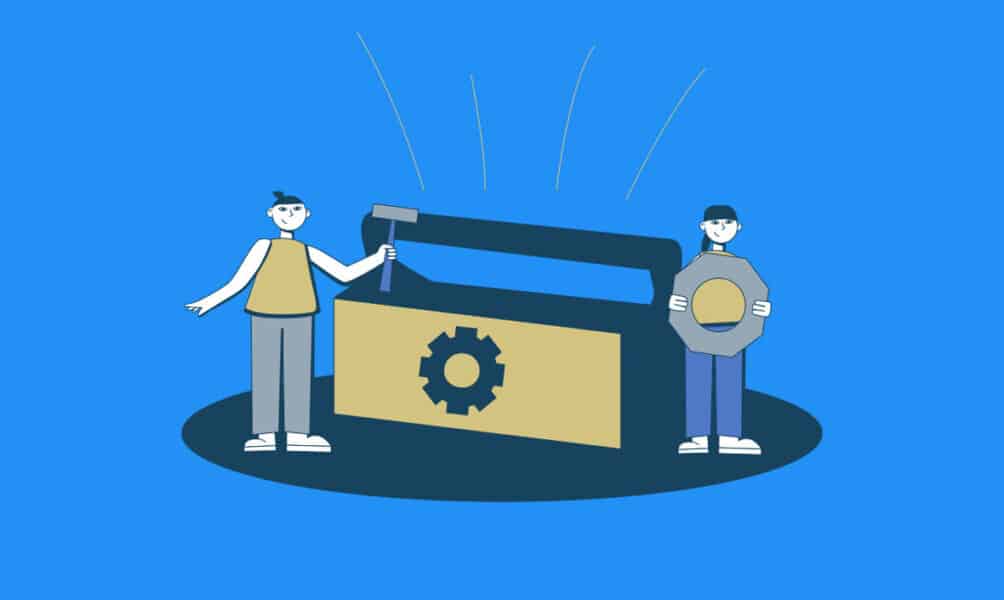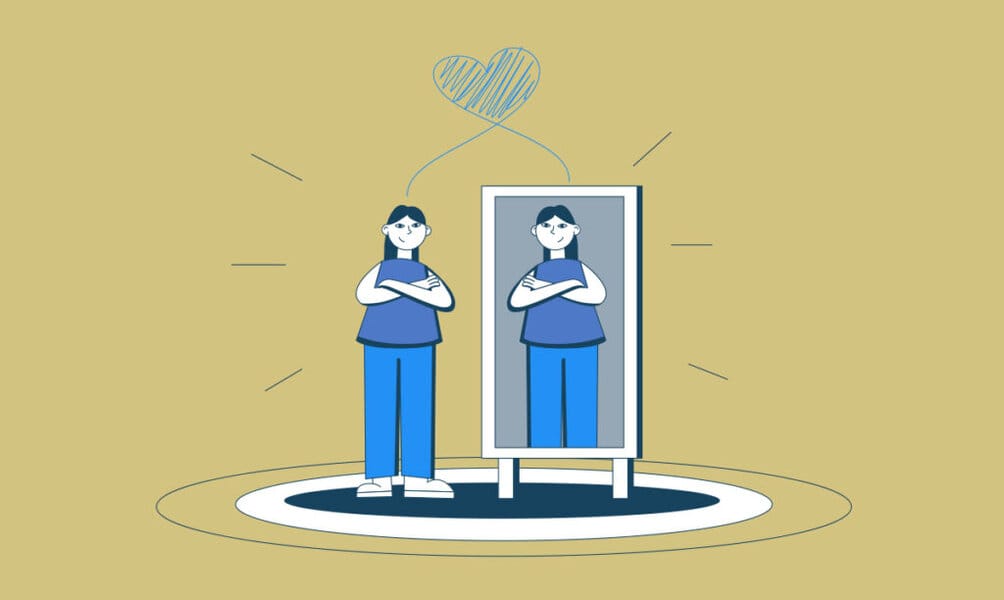Though organizations view work as distinct from the rest of employees’ personal lives, studies have shown that this approach does not lead tohighe ...
Back to Management & Leadership
Types of HR Management Software
Written by: Talia Knowles
Talia Knowles is an avid reader, writer, and coffee enthusiast, with over five years of experience in writing and editing.
Reviewed by: Keca Ward
As a seasoned HR professional with over 20 years of experience, Keca is an expert in various aspects of Human Resources.
Updated on October 5, 2023

Types of HR Management Software
- Who Benefits From HR Management Software?
- Types of HR Management Software
- Benefits of HR Management Software
- Conclusion
- Types of HR Management Software FAQs
If you run your own business or even your own HR department, you’re all too familiar with the mountains of paperwork that seem to appear every time you blink.
If you’ve been taking care of HR processes by hand or operating with an inefficient management software system, learning more about the various options available could very well change your life. Well, your professional life, at least.
This guide provides you with a comprehensive breakdown of the various kinds of HR management software on the market, as well as which kind might be best suited for your business’s needs.
Who Benefits From HR Management Software?

The primary users of HR management software are typically the HR department, as these tools are specifically designed to help HR reps do their jobs.
However, some HR management systems also feature tools for other employees as well, allowing them to fill out their tax information, view paystubs, and request time off.
These systems can also be used to create analytical reports for management. No longer will an HR rep need to pore over data to create graphs — with HR management software, employees can generate reports with a few easy clicks.
The wide-reaching effects of HR management software mean that it benefits all members of the workforce, whether they are directly involved in HR-related processes or simply enjoy a streamlined recruiting and payroll process.
Types of HR Management Software
1. Recruiting and Hiring
The foundation of a successful business is building a great team, but this is often easier said than done. Especially with the rise of internet recruiting, staying on top of your recruiting process is more important than ever to ensure you’re using the right methods to attract new talent.
You’ll get more eyes on recruiting posts if you utilize multiple platforms, but keeping track of all this information by hand can be difficult. Luckily, recruiting and hiring software can automate some of these processes for your HR department, giving them more time to connect directly with candidates.
Recruiting and hiring software can also help your business grow a pool of potential candidates by generating postings on multiple platforms and offering online applications and resume submissions.
You can even set mandatory minimum experience requirements to weed out unqualified applicants before your team spends time looking over their applications.
Other benefits of this software include applicant tracking and screening, automatic candidate sorting, and assistance with scheduling interviews. Recruiting and hiring software often includes video interviewing capabilities, chatbot features, and candidate relationship marketing.
Best of all, this software offers tools for internal review so you can easily track what is working in your recruitment process and what could use some attention.
2. Applicant Tracking Systems
Applicant tracking systems, or ATS, are used in tandem with recruiting and hiring software. ATS software can make every aspect of recruiting easier for your HR department, from sourcing applications to keeping track of their progress through the steps of recruitment.
Every hiring manager knows the frustrations of spending a lot of time on a candidate only for them to suddenly withdraw their application.
If candidates feel frustrated at a slow or confusing hiring process, they may pursue other opportunities. In this case, ATS software can improve the applicant experience with clear communication and easy access to updates on their status as an applicant.
Candidates can sometimes waste HR time for other reasons, such as not being serious about the job or being dishonest about qualifications. ATS software is also a huge help in these cases, as automating aspects of the process will save your reps time and energy and allow them to focus on thoroughly vetting new candidates.
This software makes it easy to keep resumes on hand in case a new position opens up that is perfect for a previous candidate. You can also use these programs to facilitate conversations with potential candidates over social media.
Beyond its time-saving capabilities, ATS software can help ensure legal compliance throughout the hiring process and keep track of recruiting metrics that will help you analyze and improve your hiring process overall.
For organizations looking to improve their diversity hiring, ATS software can also collect data and generate reports on applicant demographics, as well as which candidates are most likely to make it to the final rounds of hiring. If there’s a bias problem, ATS software can help identify it.
3. Onboarding and Offboarding
Once a hiring decision is made, a slog of paperwork usually stands between the new employee and the moment they can actually get to work.
Rather than letting your HR reps labor over tax forms and direct deposit information, use an onboarding and offboarding software to ensure everything is done by the book.
Besides making life easier for your HR department, these types of software also help new employees immediately feel more involved. New hires can often fill out many of the necessary forms online and be granted access to documents like employee handbooks and more.
Onboarding and offboarding software often feature onboarding and offboarding checklists, document storage, and a self-service application that allows employees to access their information at any time.
More advanced software sometimes offers specific training content for different roles, so you can tailor your new hire’s experience to provide exactly what they need to get started in their position.
4. Employee Scheduling
If you run a business like a restaurant or a store with many hourly employees and a constantly shifting schedule, employee scheduling software is a lifesaver.
Your scheduling manager will no longer receive last-minute texts asking for vacation time or swapped shifts, as this is all automated through an easily-accessible app.
Each employee can access their schedule and request time off or shift coverage with co-worker and manager approval. This prevents miscommunication that could leave you short-staffed and can also be used to remind employees about upcoming shifts or schedule changes.
This software also offers tools for employees to communicate with each other without necessarily needing to give out their private contact information. With easy access from a smartphone or computer, your scheduling manager can see who is available and when to ensure your business is always adequately staffed.
5. Employee Training and Development
Whether you run a restaurant or an office, there are certain skill sets that your employees will need to have mastered before they begin work.
Food safety programs, sexual harassment seminars, cybersecurity trainings, and more can all be administered through employee training and development softwares.
Instead of an HR rep flicking through a slideshow, new hires can complete these trainings from home and even return to them for reference in the future. Administrators can track their progress through the course and use assessment tools to make sure the new knowledge is sinking in.
These tools can also be used to create custom courses specific to your business. For example, you can create a simple video presentation that explains your company protocol and save yourself the time of explaining it over and over to each new hire.
6. Benefits Administration
All employees appreciate a generous benefits package, but organizing the relevant forms can be a pain for HR departments. That’s where HR software for benefits administration comes in handy.
These programs have features to streamline payroll, share insurance information, and track paid time off. They also allow users to monitor the progress of their retirement accounts and other financial information, such as commissions earned or progress toward an incentive.
A big perk of benefits administration software is that it allows staff to take their benefits into their own hands and feel equipped to make informed decisions about their healthcare, retirement, and other important matters.
If desired, administration software can also facilitate a self-service approach to benefits that allows employees to personalize their benefits package.
This software also is useful for employers who need to monitor payroll reductions, pay programs, or reward systems. It typically integrates with other HR softwares, such as payroll-specific programs, and can generate reports that help you get a full picture of your business’s compensation program.
7. Employee Engagement
Once you’ve hired a great team, retaining them is the next challenge. Today’s job market favors the employee, so ensuring your team is happy in their positions and experiences a positive work environment is very beneficial.
Employee engagement HR software can help your HR department support employees throughout all aspects of the employee life cycle. It offers tools for frequent communication between employees and can gather employee feedback to help assist management in difficult decisions.
No matter their role, people tend to perform better when they feel that their efforts are seen and appreciated
This software also offers methods of employee recognition, such as public notices of achievements, methods of peer-to-peer kudos, and rewards for a job well done.
Employee engagement software offers tools to make recognition a daily occurrence, such as goal visualization and tracking, performance evaluation, feedback opportunities, and even games or competitions that make work tasks more enjoyable.
If you think emojis are unprofessional, think again! Thumbs-up and thumbs-down emojis make it easy to acknowledge a message quickly and can bring a bit of fun to professional messaging.
8. Performance Management
Performance management software provides the data necessary to determine which employees are worthy of special recognition. After all, if someone’s hard work goes unnoticed, it may discourage that employee from working hard again in the future.
Therefore, performance management software goes hand-in-hand with employee engagement software, and sometimes is offered in one single platform.
By zeroing in on individual performance, performance management software can give employers an accurate idea of how work is performed across the organization.
This information can be used to create performance appraisals, which are extremely useful in giving fair and honest employee performance reviews.
Unconscious bias can often negatively impact your team and individual employees, so automating the process to remove bias is a good first step toward improving your organization’s equity.
You can also use this software to gather peer-to-peer feedback, allowing you to make sure standards are upheld — even when you aren’t around.
9. Payroll
Businesses of kinds and sizes can benefit from automating their payroll processes. Figuring out payroll by hand is time-consuming and makes it all too easy to make a small computational error that will set you back even more.
Luckily, payroll and accounting softwares take the guesswork out of your business’s finances and provide reassurance that you’re in compliance with all tax laws.
Employees can also benefit from these services, as they can view their wages and tax deductions and even store other tax documents within the platform. Payroll software also makes it easy for staff to track their progress toward retirement and monitor their financial security.
For businesses that pay hourly wages, employees will also be able to keep track of their timesheets and ensure everything is in order before payday.
10. Information Systems
Human resource information systems, or HRISs, offer a combination of tools that make it easy to manage your workforce’s data, such as their contact information and payment preferences.
Because many of these systems can integrate with other HR software systems, you can utilize a central database of your employees’ information in tandem with other programs to streamline HR processes.
Some of the information you can store in HRISs include benefits information, performance reviews, onboarding and offboarding information, and protocol for work absences.
11. Management Systems
An HRMS, or human resources management system, is a suite of different software programs that can help your organization accomplish all HR-related tasks.
Basically, an HRMS offers a combination of all the softwares explained in this list, allowing your business to reap the full benefits of what HR software has to offer.
HR management systems offer a combination of tools for recruiting, managing benefits and performances, and generating reports for all facets of your business.
Benefits of HR Management Software
Implementing HR Management Software brings various benefits to an organization, as outlined in the table below:
| Benefit | Description |
|---|---|
| Efficiency | Streamlines HR processes, saving time and reducing manual labor. |
| Data Accessibility | Centralizes employee data, making it easy to access and manage. |
| Decision Making | Provides analytics for data-driven decision-making. |
| Compliance | Helps organizations stay compliant with labor laws and regulations. |
| Employee Self-service | Allows employees to manage their own information, reducing administrative workload. |
| Onboarding & Offboarding | Simplifies the processes of bringing new employees onboard and managing exits. |
| Performance Management | Provides tools for tracking employee performance, goals, and providing feedback. |
| Recruitment & Talent Acquisition | Enhances recruitment processes with applicant tracking system (ATS) capabilities. |
Your business’s success depends on countless factors working together in harmony. If something’s not working, it can be difficult to determine the source of the problem and take steps to improve it.
HR software for reporting strategic insights can help you pinpoint areas that need improvement and carefully monitor their progress over time. Especially if you’re not a big numbers person, the ability to automatically generate easy-to-read reports can save you hours of work and frustration.
Additionally, this type of software can detect overarching patterns and trends that a human might easily miss, which will help you make more informed and strategic decisions.
Many businesses report HR-related expenses as some of their highest costs, so it’s beneficial to keep a close eye on HR processes and notice where they can be streamlined.
HR management software can speed up standard HR procedures and provide valuable reports that draw attention to areas needing improvement.
Recruitment tools can make the process easier and more accessible for candidates and later provide them with all the tools needed to onboard and complete necessary trainings.
Once they are settled in, employees can also track their benefits, earnings, and time off and access their weekly schedule through easy HR management software interfaces.
HR departments can use HR management software to reduce the likelihood of making mistakes in payroll and generate accurate reports for performance management and review.
Conclusion
Now that we’ve covered the various kinds of HR management software, you’re in a good place to choose which software tools will most benefit your business.
If you want to go all-in, an HR management system will grant your team comprehensive access to all types of HR management software in one package, providing countless benefits to your HR department and staff.
Especially in light of the shift to remote working, equipping employees to be self-sufficient in managing their benefits, schedules, and more will help make your business more efficient.
These software systems will also reduce the likelihood of overworking your HR reps. HR can set the tone for your entire organization, so helping them out will ultimately benefit your other employees and your business as a whole.
Types of HR Management Software FAQs
It may take some trial and error to figure out which software is best for you, but there are a few factors you can plan for in advance. Determine which features you need to streamline your HR process and try not to change systems that already work well. Budget for how much you can afford to spend on new software, and ensure that any system you’re considering is compatible with the programs you already use.
HR management software is available in a wide range of options, so it can cost anywhere from $8/month all the way to $3,500/month. Many HR management softwares are offered on a subscription basis, with the price going up depending on how many employees you have and whether you require more advanced features.
HR management software offers numerous benefits but can have negative effects as well. Automating recruitment processes may make things easier for the HR department but can appear cold or impersonal to candidates. Also, no matter how good your software is, it can only measure performance through data and statistics and might miss interpersonal elements. It’s always a good idea to keep a pair of human eyes on these processes — the department is called human resources for a reason.
Though many HR management systems are designed to be very user-friendly, you should provide your team with a brief training on how to get the most benefits from your new software system. This can also help prevent miscommunication down the line and save HR reps time by teaching employees to use the software as intended.
Featured Resources

Self-awareness is a critical life skill that equips individuals to see themselves clearly— conceptualizing their place within a workplace dynamic, ...

The future of work ischanging. With more tools available to enable collaboration, faster networking speeds, and the rise of artificialinte ...

